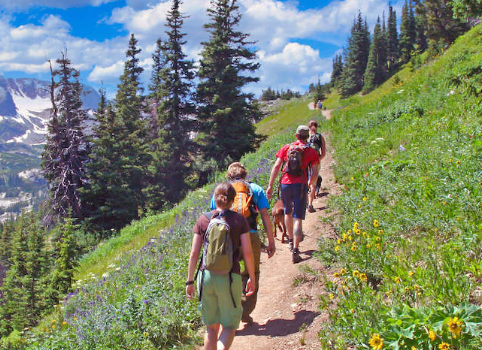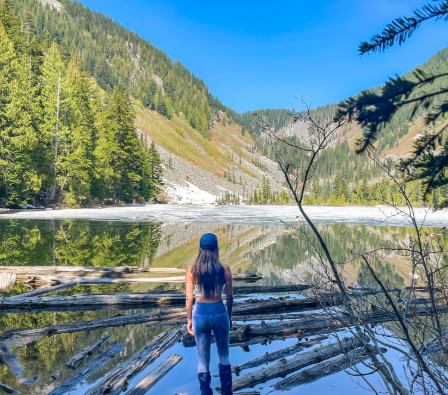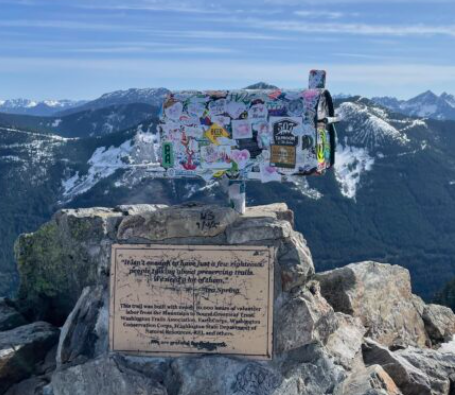
When you hit the trails, whether it’s for a quick day hike or an extended backpacking trip, there are some important guidelines to keep in mind to ensure you’re being respectful to nature and fellow hikers. Trail etiquette not only enhances your own experience but also helps preserve the beauty of the outdoors for others to enjoy. Here are some of the key practices every hiker should follow to stay considerate and responsible on the trails.
1. Leave No Trace
At the core of responsible hiking is the Leave No Trace (LNT) principle. This concept emphasizes minimizing your impact on the environment, ensuring the landscape stays as pristine as possible for future generations. Let’s break down the seven principles of LNT:
- Plan Ahead & Prepare: Know your route and the weather conditions. Be aware of any regulations or restrictions, like parking rules or group size limits.
- Travel & Camp on Durable Surfaces: Stick to established trails and campsites to avoid damaging vegetation. Walking on rocks, sand, or packed dirt helps prevent plant destruction.
- Dispose of Waste Properly: If nature calls, dig a 6-inch deep cat hole. Always pack out trash, including pet waste. Use biodegradable hygiene products when cleaning up.
- Leave What You Find: Avoid disturbing wildlife, plants, and natural features. Don’t carve on trees or take rocks, flowers, or souvenirs.
- Minimize Campfire Impact: Only use established fire rings, and ensure your fire is fully extinguished. With increasing fire risks, avoid making campfires when conditions are dry.
- Respect Wildlife: Keep your distance from animals, and never feed them. You’re a guest in their home, so always give them the space they need.
- Be Considerate of Other Visitors: Keep noise levels down, especially if you’re listening to music or using drones. Respect the serenity that others are seeking while on the trail.
By following these simple guidelines, you’re helping to preserve the trail for those who come after you.
2. Right of Way
When hiking, you’ll inevitably meet others on the path. Understanding right-of-way rules ensures everyone moves along smoothly.
- Uphill hikers have the right of way: Climbing is harder work, so give them space to maintain their momentum.
- Special Situations: If you’re hiking downhill and encounter backpackers carrying heavy loads, give them the right of way. Similarly, if a large group is coming down, it’s polite to step aside and let them pass.
- Speedy hikers: If you’re moving faster and need to pass someone, give them a heads-up. A simple, “Excuse me, may I pass?” lets them know you’re coming, and you can continue on your way.
Remember, communication is key, and always avoid stepping on plants or damaging the surroundings when moving aside.
3. Music on the Trail
It’s tempting to bring your favorite tunes along for the hike, but the trail is a place for quiet reflection and immersion in nature. Playing music on speakers can disrupt others’ experiences.
- The Rule: Always use headphones if you want to listen to music, as many hikers seek solitude and the sounds of nature, not your playlist.
- Exceptions: In bear country, making noise is important for safety. Some hikers use bear bells or sing to keep bears at bay. In these situations, feel free to use your speaker—just keep it low and respectful.
4. Packing Out Trash
This rule couldn’t be simpler: pack it in, pack it out. Always take out what you bring, including food wrappers, tissue, and anything else that might end up as litter.
- Food waste: Even though fruit peels are biodegradable, they can still attract animals and disrupt the ecosystem. Dispose of all trash, even natural materials, properly.
- Dog waste: Clean up after your dog and pack out any waste. Many trailheads will have specific trash bins, but be mindful of signs prohibiting human or pet waste.
By being diligent about trash, you’re helping to maintain the beauty of the outdoors for everyone.
5. Driving to Trailheads
Your responsibility doesn’t stop when you hit the trail. Forest roads can vary from smooth drives to bumpy, pothole-filled paths. If you’re driving slowly, be courteous to others by pulling over to allow faster vehicles to pass.
- Parking: When you park at trailheads, make sure you’re not blocking other vehicles or making it harder for others to access the trail. Take up only the space you need, and ensure your car is parked safely.
By being mindful of your driving and parking, you help keep the access to these beautiful places convenient for everyone.
Final Thoughts
Being considerate on the trail isn’t just about following rules; it’s about creating an enjoyable experience for everyone, while also preserving the natural world we love to explore. By following these simple guidelines, you can be a responsible hiker and ensure that the trails remain as beautiful and accessible as possible. So, next time you hit the trail, keep these tips in mind, and remember that good trail etiquette makes a big difference. Happy hiking!








